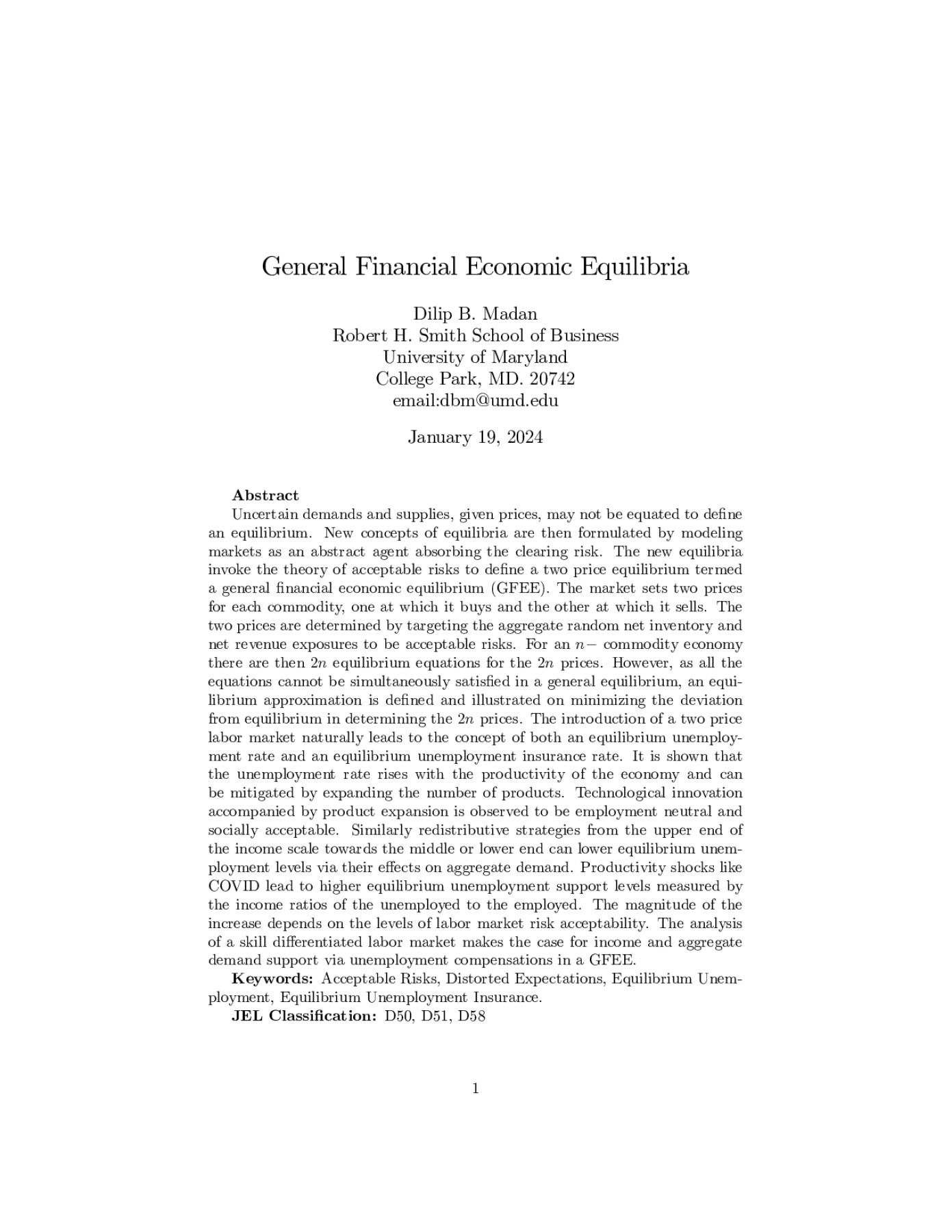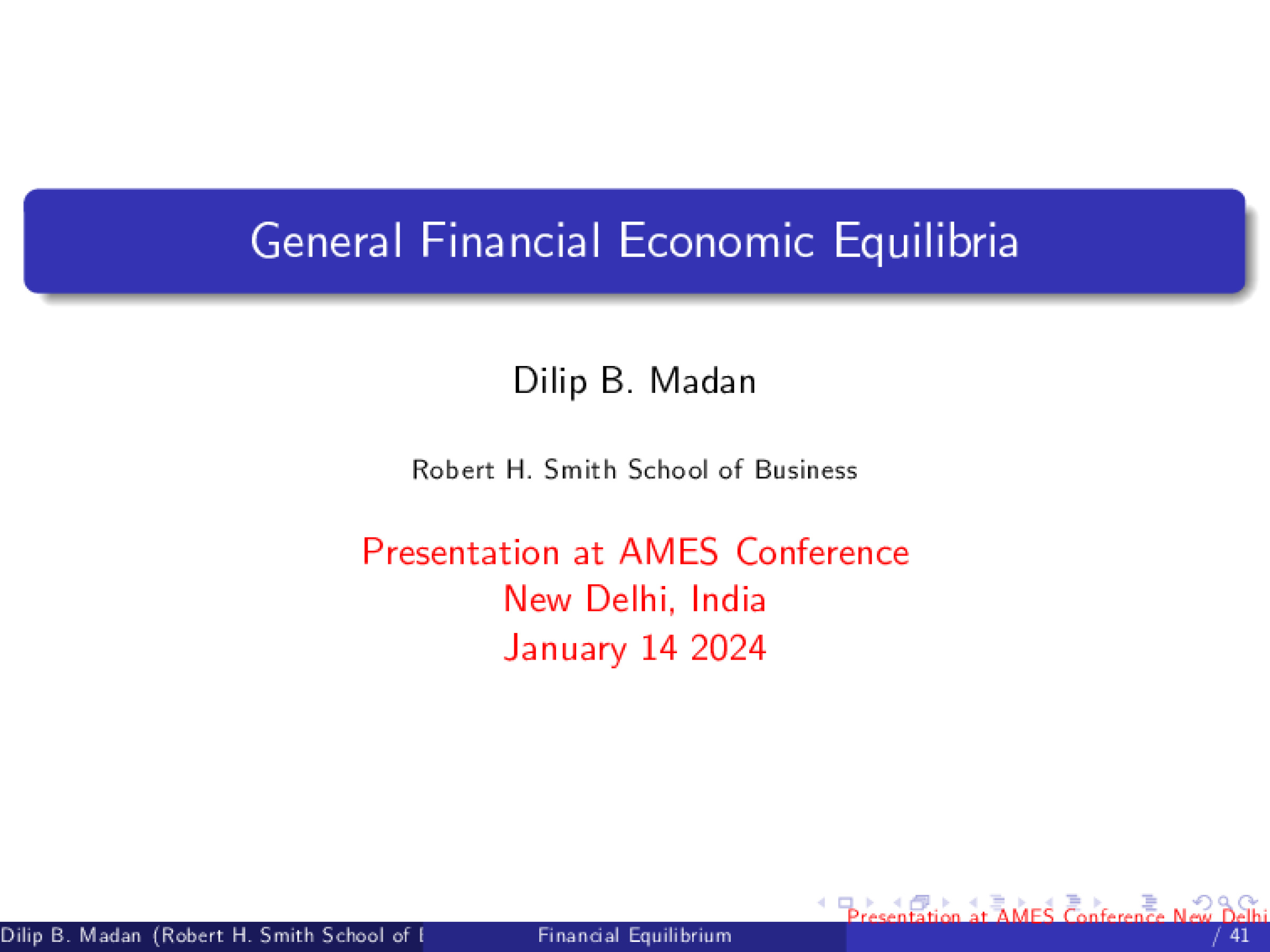2024 Asia Meeting, South/Central/West, Delhi, India: January, 2024
General Financial Economic Equilibria
Dilip B. Madan
Uncertain demands and supplies, given prices, may not be equated to define an equilibrium. New concepts of equilibria are then formulated by modeling markets as an abstract agent absorbing the clearing risk. The new equilibria invoke the theory of acceptable risks to define a two price equilibrium termed a general financial economic equilibrium (GFEE). The market sets two prices for each commodity, one at which it buys and the other at which it sells. The two prices are determined by targeting the aggregate random net inventory and net revenue exposures to be acceptable risks. For an n- commodity economy there are then 2n equilibrium equations for the 2n prices. However, as all the equations cannot be simultaneously satisfied in a general equilibrium, an equilibrium approximation is defined and illustrated on minimizing the deviation from equilibrium in determining the 2n prices. The introduction of a two price labor market naturally leads to the concept of both an equilibrium unemployment rate and an equilibrium unemployment insurance rate. It is shown that the unemployment rate rises with the productivity of the economy and can be mitigated by expanding the number of products. Technological innovation accompanied by product expansion is observed to be employment neutral and socially acceptable. Similarly redistributive strategies from the upper end of the income scale towards the middle or lower end can lower equilibrium unemployment levels via their effects on aggregate demand. Productivity shocks like COVID lead to higher equilibrium unemployment support levels measured by the income ratios of the unemployed to the employed. The magnitude of the increase depends on the levels of labor market risk acceptability. The analysis of a skill differentiated labor market makes the case for income and aggregate demand support via unemployment compensations in a GFEE.
Preview








































































































































































































